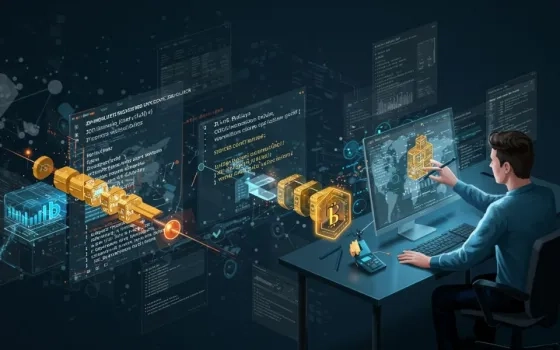Anthony Bourdain once remarked, “Luck is not a business model.” The celebrity chef, author, and travel documentarian was right on several counts with his observation; most notably, his view on the importance of the business model.
The business model forms the backbone of an enterprise, helping define how it creates and delivers value for customers, drives transformative operational paradigms, and generates revenues.
However, in a rapidly changing world marked by technological advancements, evolving stakeholder expectations, geopolitical shifts, and environmental concerns, traditional models are becoming increasingly outdated and ineffective. As these concerns grow, businesses worldwide need to rethink their strategies to remain relevant in the marketplace. Engineering Research and Development (ER&D)—with its focus on leveraging new-age technologies and digital solutions—has emerged as a key player in this transformational journey.
But what does this transformation look like? Enter Outcome-Based Models (OBM)—an approach that's been in the IT sector for years and is now getting widely accepted in the engineering services sector as well.
Unlike conventional models where service providers are paid for the services they render, OBMs tie compensation to the results achieved. This shift aligns the interests of both the service provider and the customer, fostering a shared commitment to achieving the desired outcomes.
The Outcome-Based Model doesn't just shift the risk from the customer to the service provider—it also encourages continuous improvement of services and solutions. Revenue is directly linked to performance, which incentivizes service providers to strive for excellence. This model has found favor particularly in industries where results can be clearly measured and quantified, such as automotive, aerospace, and industrial products. Moreover, OBMs signify a move away from traditional 'body shop' models towards value-based pricing. Customers pay for the value created rather than the number of resources deployed. By tying compensation to results, this model ensures that customers get value for their money, while providers are incentivized to deliver the best possible outcomes. In an ever-evolving business landscape, Outcome-Based Models offer a path to sustainability and success.
Need for Reimagination: Use Cases for Tomorrow
Rapid innovation journeys across industries are helping accelerate the continuous evolution of technology. From the rise of Generative AI to the emergence of Software-Defined Vehicles (SDV), and onwards to the growing global focus on the circular economy – the transformative power of technology and innovation is evident across all walks of life. We are witnessing a new phase across the global business operations landscape.
Take the case of Generative AI. By automating and accelerating the design process, Generative AI allows engineers to concentrate on higher-value tasks. For ER&D services providers, leveraging Generative AI can be used to optimize design cycles and help in product enhancements, by letting engineers track and analyze products and implement new variations. Furthermore, the use of AI in predictive maintenance, quality control, and process optimization has the potential to boost operational efficiencies.
The current scenario is underscored by a transition toward ensuring unmatched experiences, as opposed to just delivering product-centric gratification. Customers today are more focused on key aspects like personalization, convenience, and consistency, rather than just demanding that the product or solution meet their immediate needs. The demand for a human touch has merged as being more relevant than ever, even when it is delivered within a virtual environment like the Metaverse.
Growing interest among stakeholders for ensuring environmental sustainability, driving societal acceptance, and complying with relevant government regulations is a key factor contributing to the need for a reimagination of business models. Complying with these requirements not only calls for a renewed commitment toward the environment, but also highlights the need for a focused relook at existing practices and approaches for promoting sustainability across the board. The emerging paradigm, as we highlighted earlier, is further strengthened by the growing interest toward adopting to a circular economy across the board.
A new era: Glocal Model with Extreme Offshoring
In order to navigate the complexities of technology and its rapid evolution, ER&D services providers must embrace the concept of collaborative innovation. This involves forming strategic alliances with both end customers and peers, and adopting co-ownership models that pool resources, expertise, and market access. By sharing responsibility, risks are not only distributed but interests are also aligned with those of our partners, creating a conducive environment for large-scale ER&D initiatives.
The recent global disruptions, however, have highlighted the importance of supply chain resilience. As an ER&D provider, diversifying supply chains is essential, spreading risks across multiple geographies and suppliers. This necessitates a 'GLOCAL' approach, combining global sourcing strategies with local adaptation. This strategy can mitigate risk while capitalizing on local opportunities and innovations.
One facet of this Glocal model that has gained prominence is the move towards extreme offshoring. The COVID-19 pandemic has proven that most work can be done from anywhere. Consequently, tasks that do not require a physical presence near the customer should be executed at locations where scale is feasible. The #extremeoffshoring approach provides a substantial advantage by tapping into global talent pools and leveraging the benefits of economies of scale. However, it's important to maintain a balance – while a bulk of the tasks can be conducted globally, a minimal local presence is crucial to avoid any potential loss-in-translation between customer requirements and actual implementation. Therefore, the mantra should be: Minimal local; maximum global.
Adopting the Glide Path: Toward Innovative Business Models
We believe that the reimagination journey toward innovative business models for the future can be streamlined by adopting to a 7 Dimensional Glide Path. The journey involves:
- Driving People Engagement: This involves a commitment toward nurturing and promoting talent to ensure a suitable environment for enabling revitalized problem solving and innovation. Continued development initiatives to help up-skill and cross-skill employees can become a key differentiator for enabling future business success.
- Ensuring Customer Centricity: As the global business landscape evolves, we need to take a relook at existing paradigms for ensuring customer centricity across the value chain. Customer successes should come to constitute the core objective of business, with effective partnerships and alliances driving the future paradigms of relevance in the marketplace.
- Enhancing Technology Quotient: Technology is rapidly redefining the global approaches to business. To ensure future success, the business model of the organization should go beyond just investing in new solutions and enablers and enhance the ability of its people in adopting to these technologies. Without effective adoption, even the most cutting-edge offering would fall short on its promise. Digital engineering services, leveraging cutting-edge solutions and offerings, are proving to be a major driving force here by enabling unmatched technology-led transformations that are easy to adopt, cost-effective, and sustainable.
- Enabling Environmental, Social, and Governance (ESG): Business success is defined by the environment it operates in. To enable continued and robust performance, the focus here needs to be on minimizing environmental impact, maximizing social outreach, and driving sustainability across all areas of operations. ESG also acts a pivot points for business transformation initiatives, by helping enhance results in a credible and reliable manner.
- Focusing on Industry Leading Growth: A key factor for ensuring continued success involves incorporating an unwavering focus on industry leading growth within the business model. This would involve leveraging targeted investments in major growth areas and driving technology-led differentiation journeys across the organization’s operational spectrum.
- Leveraging a Sustainable Operating Model: An innovative business model is built upon the ideas of robust business sustainability. Adopting a robust operations playbook and aligning investments with identified key growth areas are some key steps in this direction. The elements of business sustainability, within the parameters of the overall business model, play a major role in driving future success.
- Extreme Offshoring: This has emerged as a significant lever. Extreme offshoring allows us to harness global talent, reduce costs, and enhance operational efficiency while ensuring that we remain responsive to our clients' needs. By integrating #extremeoffshoring into our Glide Path, we can navigate the complexities of global business operations and drive transformative business success paradigms across all areas of our operations.
Engineering the Future
As we stand at the threshold of the next industrial revolution, it is imperative to anticipate how future operating models will evolve, with the help of Engineering Research & Development ER&D. Businesses must adapt to the dynamism of the digital age by continuously innovating their frameworks. As businesses evolve in response to the continuing changes across the global landscape – from technology to geopolitics – the need of the hour is to be flexible yet resilient to leverage the emerging opportunities. Continued success and relevance in the marketplace will be defined the robustness of the underlying business model as organization move ahead on their journey toward the future. Leveraging the capabilities of a new-age, digital engineering partners can help global businesses unlock new value streams, drive resilient performance, and ensure stakeholder excellence across all touchpoints.
It is the very nature of this journey toward engineering the future that would help underscore the vitality of the business model adopted. It's not just about automation; it's about amplifying human creativity with the power of engineering and algorithms.

Authored by Abhishek Sinha, Chief Operating Officer and Board Member at L&T Technology Services (LTTS).



















